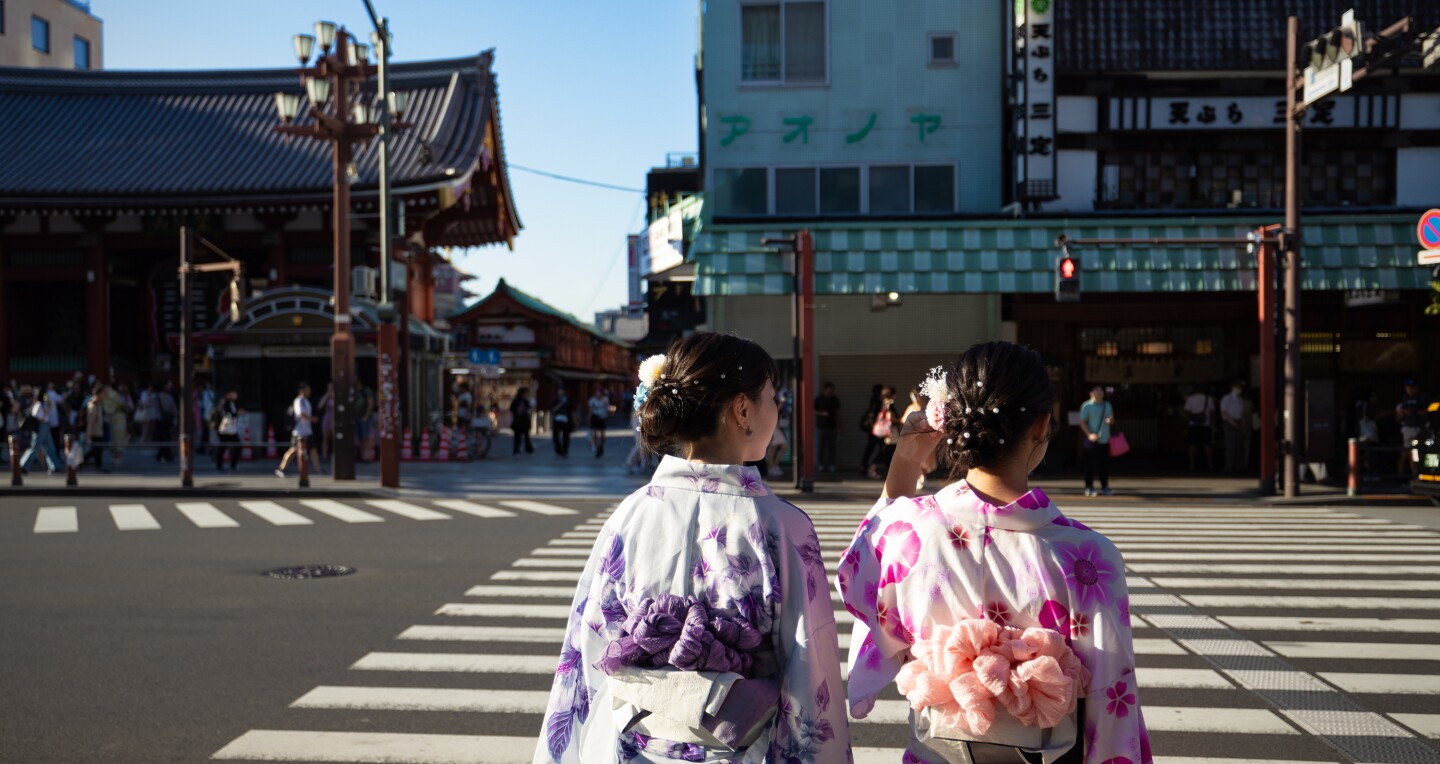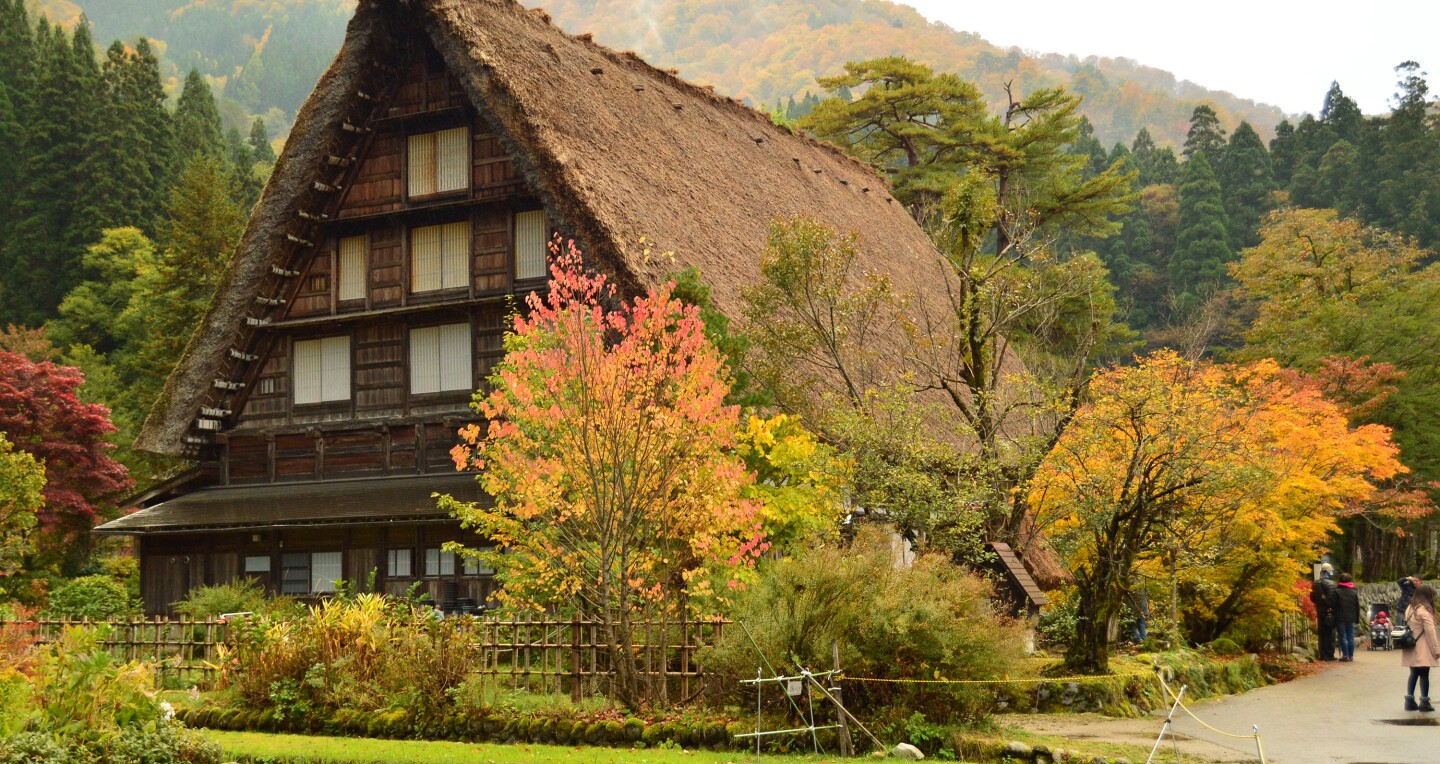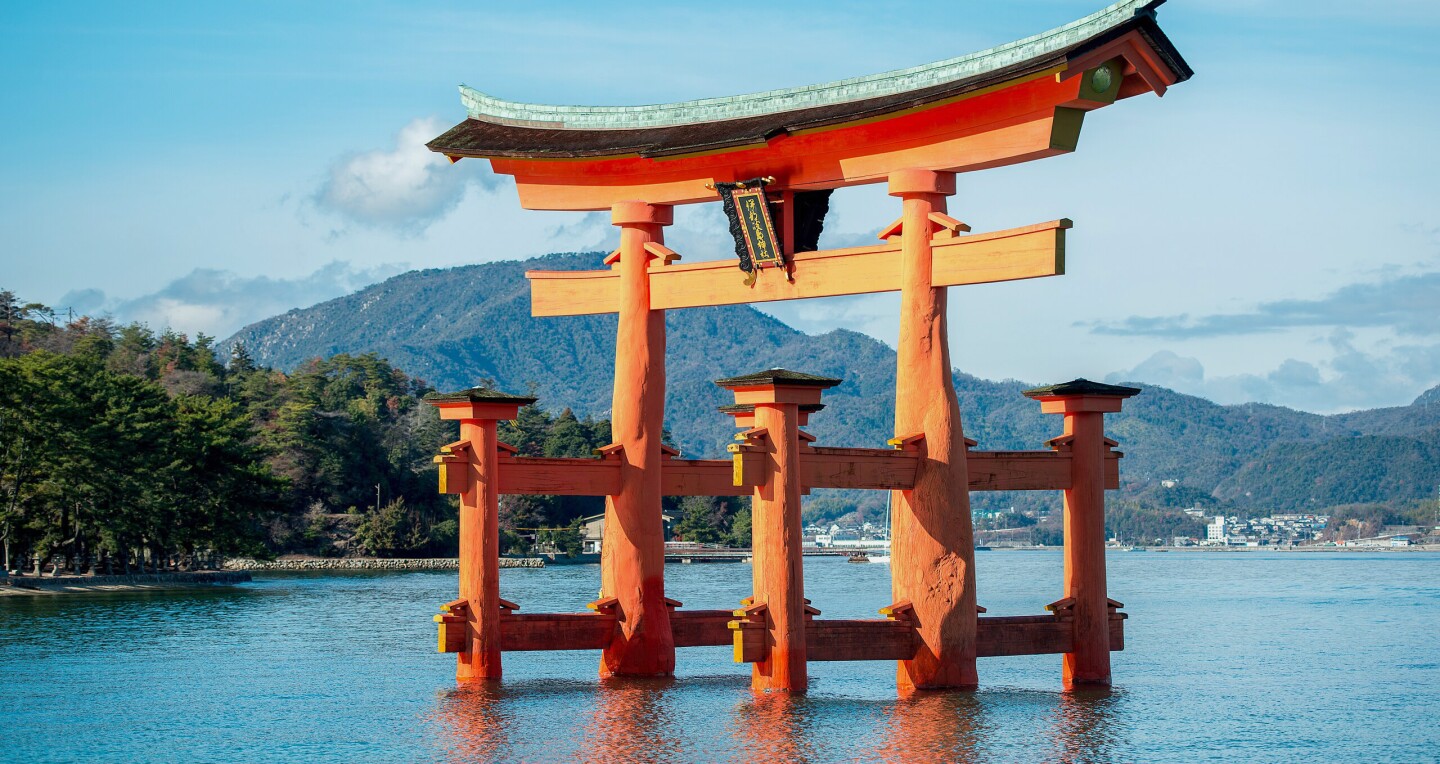Explore the best Japan has to offer with this 12-day itinerary, ranging from Tokyo to mountain villages, a samurai castle, the beauty of Kyoto, and more. Along the way, you’ll immerse yourself in the country’s perfect harmony of ancient traditions and modern innovations. Take a sushi class at a seafood market, soak in thermal springs, meditate with a Zen Buddhist monk, and learn to taste the difference between vibrant spring sake and the mellow autumnal tones as it ages.
This Premium Japan journey, tailored for solo travelers and couples 55+, features exclusive, culturally immersive experiences and private or first-class local transport. The trip also provides local guides eager to share the stories and rich variety of their homes, as well as hand-picked accommodations.
Itinerary
PLAN YOUR TRIP
Two women wearing chignons and floral kimonos cross a street in Tokyo.
Courtesy of Intrepid Travel
Days 1–3:See Sensō-ji and Take a Sushi Class in Tokyo
Explore at your leisure, maybe stopping for grilled kamaboko (cured fish cakes, a dish favored by samurai) and a local Hakone craft brew at Suzuhiro. Then, rest up before meeting the group for a welcome dinner, which might include crispy tempura, yakitori (skewered meat), and handmade soba noodles made using buckwheat flour.
The next morning, get oriented with a half-day guided tour, starting with the city’s oldest and most visited temple, Sensō-ji. This complex of intricately designed buildings, including a five-story pagoda, honors Kannon, the Buddhist goddess of mercy, and was founded nearly 1,400 years ago when Tokyo was a small fishing village.
Explore Nakamise-dōri Street, a shopping arcade since the 17th century, before heading off to the Shibuya district. Here, you’ll experience one of the world’s busiest intersections, followed by lunch in a depachika (underground food hall).
Next, check out youth culture among the cosplay shops and bubble tea bars of Harajuku. Then, ascend the futuristic broadcast and observation tower, Tokyo Skytree, which rises 2,080 feet above the city. Consider adding a stop at Tokyo National Museum (not included), before returning to the hotel.
On your third day in Tokyo, visit the Tsukiji Outer Market, specializing in fresh seafood. Get hands-on with a sushi class, then enjoy a lunch of your creations. Afterwards, your local guide will lead a walking tour of Japan’s premier shopping district, Ginza. One square foot of land here is worth approximately $23,000.
Explore on your own in the afternoon. Options include karaoke, kabuki theater, kissaten (retro-style cafés), and art inspired by hallucinations at the Yayoi Kusama Museum, often involving polka-dot patterns.

A moment’s reflection in a hot spring inn
Courtesy of Intrepid Travel
Day 4:Soak in Hakone's Hot Springs
Try a kuro-tamago (black egg), dyed by the local mineral-rich waters. Legend claims that eating one will add seven years to your life. Watch for views of Mount Fuji, Japan’s highest peak, on clear days. Next, enjoy free time in Gora, a hot spring resort town, or visit the Hakone Open-Air Museum, the country’s first outdoor art gallery (not included).
Later, check into your featured stay at Susukinohara Ichinoyu Ryokan Hakone, a hot spring hotel where each room has an open-air bath. (Especially handy for visitors with tattoos, which many public baths ban because of their historical association with the Yakuza crime syndicates.) But you can also soak up the whole onsen experience in the larger public pools fringed by greenery. Don’t get so relaxed that you miss dinner, though—it’s an onsite feast of classic Japanese dishes like namasu (carrot and daikon radish salad) and sukiyaki (slow-simmered Yonezawa wagyu beef or braised golden-eyed snapper, depending on the season).

A sugidama (cedar-needle ball) outside a sake brewery, advertising the batch’s age
Courtesy of Bernard Gagnon/Wikimedia Commons
Day 5:Eat Hida Beef in Takayama
A guided walking tour will orient you to San-machi Suji, a district nicknamed “Little Kyoto” for its grey stone, wooden doors, and latticed windows. As you stroll, sample street treats like Hida-gyu sushi or skewers. This distinctive beef—now hitting the global stage—comes from local black-haired Japanese cattle, which graze in remote highland pastures for at least 14 months. Most descend from a single bull named Yasufuku J930, who passed along his ideal genetic makeup to over 40,000 offspring.
Keep an eye out for sugidama (cedar-needle balls) displayed outside sake breweries. Made from fresh green fronds in early spring, they advertise a new year of production. As they age, they signal how much the batch has matured from the piquancy of its youth to flavors that perfectly complement mushrooms and chestnuts. Even if you don’t drink, these natural advertisements make for lovely photos.
Next, time travel at the Takayama Shōwa-kan Museum, which reconstructs the 1950s, complete with a candy store, barbershop, and photo studio. Then return to the Hotel Around Takayama (or similar).

Shirakawa-gō, a UNESCO World Heritage Site
Courtesy of Miguel Romay/Wikimedia Commons
Day 6:Visit the Hida-Takayama Miyagawa Morning Market and Shirakawa-gō
Then, hop a public bus to the tiny traditional village of Shirakawa-gō, a UNESCO World Heritage Site. Here, you’ll see authentic farmhouses and gasshō-zukuri (thatched-roof) homes built between the 17th century and the dawn of the 20th century. The roofs’ steep pitches shed snow easily in winter and once provided attic space for cultivating silkworms.
For your free afternoon back in the city, consider a solo trip to the Takayama Matsuri Yatai Kaikan (Festival Floats Exhibition Hall). Young women from the Hachiman Shrine next door guide visitors around these tall, ornate displays of legendary craftsmanship (not included).

The torii gate on Miyajima Island
Courtesy of JordyMeow/Wikimedia Commons
Days 7–8:Explore Hiroshima and Miyajima Island
Over the next two days, you’ll learn more about this terrifying legacy at the Genbaku Dome, a three-story brick exhibition hall 525 feet from the blast’s center. A young victim’s diary sparked the move to preserve the ruin and “forever remind future generations of the horrors of the atomic bomb.” You’ll also visit the nearby Hiroshima Peace Memorial Museum with your group. Residents never redeveloped this flattened .5-square-mile zone, formerly the political and commercial heart of the city. It’s now a park with lawns, fountains, and walking paths.
While here for two nights, you’ll stay at the Hotel Intergate Hiroshima, a contemporary building known for spacious air-conditioned rooms. Check its calendar for traditional cultural workshops such as making bookmarks, hairpins, and kumano fude (artisanal makeup brushes dating back to the late Edo period). If the timing doesn’t align, consider requesting a souvenir crafting kit to take with you.
You’ll also experience local culture at a group dinner showcasing dishes like oysters grilled over an open flame and okonomiyaki. The savory pancake is like a frittata, made with eggs, cabbage, scallions, and meat or seafood.
End your visit to Hiroshima with a day trip to Miyajima Island, famous for its orange torii gate, which seems to float on the water at high tide. This threshold marks the entrance to the 593 C.E. Shinto shrine of Itsukushima-jinja, another UNESCO World Heritage Site. But modern visitors see a version from 1168 in the shinden-zukuri style prized by nobles, royals, and samurai at the time. These open structures typically feature shutters made from slats or lattice, tatami mats instead of beds and chairs, and roofs made from laminated hinoki (Japanese cypress) bark.

Travelers meditate at Daitoku-ji Temple
Courtesy of Intrepid Travel
Days 9–12:See Shirasagi-jō, Kyoto's Geishas, and The Path of the Red Gates
Arrive in Kyoto by mid-afternoon, then take a guided walk around Gion, the city’s most famous geisha district. Today, it’s home to stylish restaurants and traditional teahouses tucked into narrow wooden machiya (townhomes with storefronts). Then check into the Gate Hotel Kyoto Takasegawa by Hulic, a stately building by a canal, for a serene three-night stay.
On Day 10, visit the Kinkaku-ji (Temple of the Golden Pavilion), a pagoda housing sacred relics of the Buddha. Afterwards, meditate and learn more about Zen Buddhism with a monk at the Daitoku-ji Temple.
The rest of the day is yours to enjoy. Intrepid Travel’s local guides recommend Nishiki, a 400-year-old market famous for soy milk doughnuts and ice cream. You can also try the Kyoto delicacy yuba, made from soy foam, along with sweet omelets and mackerel sushi.
Start your last full day at Fushimi Inari-Taisha Shrine, known worldwide as the Path of the Red Gates for its corridor of 800 red torii—only a fraction of the complex’s 10,000 gates honoring Inari, the patron of business.
You can also take a self-guided hike up mountain trails to dramatic viewpoints and personalized rock altars. Either way, end with a tsujiura senbei, rice crackers with foretelling notes that may have inspired American fortune cookies.
Continue with a short train ride and stroll to the Matsui Sake Brewery for a tour and tasting. Then, celebrate a dozen days of adventure together at a final group dinner. On the last morning, enjoy a farewell breakfast and say sayonara to your companions before everyone goes their separate ways.






